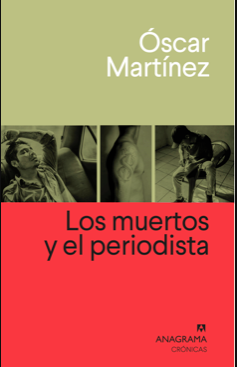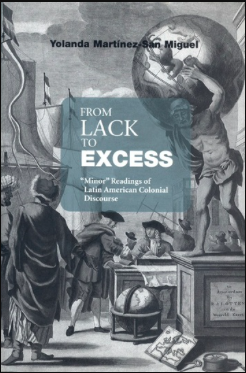
Celebrada, aclamada, odiada, ignorada y siempre bulliciosa, la conferencia de la Latin American Studies Association (LASA) se celebró en Bogotá este año del 12 al 15 de junio en las instalaciones de la Universidad Javeriana. Esta fue la sexta vez que participo en la conferencia y aun no entiendo bien qué está en juego en este evento. Está claro, por supuesto, que la conferencia sirve como punto de encuentro para viejos colegas, excompañeros, o amigos que han interactuado y discutido por años temas afines en el área de los estudios latinoamericanos. Por otra parte, es innegable que entre tantos paneles, talleres, conferencias y eventos uno no puede sino sentirse perdido y algo abrumado. Como alguna vez leí en algún lado, para evitar estos embrollos y sobrevivir LASA con éxito, el festival de cine siempre es un buen refugio. Ahora bien, ¿vale la pena hacer el viaje sólo para ver películas latinoamericanas?
No soy el primero ni el último que se para a pensar en los sentimientos encontrados que genera la conferencia de LASA. De hecho, en Bogotá y a propósito de la conferencia, Luis Guillermo Vélez Cabrera y Alejandro Lloreda escribieron una elocuente crítica sobre el festival. La nota lleva como título “Notas sobre un festival woke.” La nota apunta como a partir de las diferentes divergencias que ha tomado “la izquierda” mundial, sobre todo en Norteamérica, muchos temas canónicos de los estudios latinoamericanos, y otras áreas, han sido desplazados por una agenda “woke.” La palabra, que en inglés hace referencia al estar despierto, pero también a una serie de luchas y reivindicaciones sociales popularizadas por redes sociales a partir del #metoo, y otros movimientos sociales, carga una connotación ambivalente. Mientras que para algunos lo woke refiere a un intento por reivindicar a grupos marginalizados a través de prácticas simbólicas y sociales, como la inclusión de grupos minoritarios en el reparto de películas y programas de entretenimiento. Para otros, lo woke refiere a la atomización social y al dominio de las políticas de identidad acérrimo y más reaccionario. Es decir, como bien ilustran Vélez Cabrera y Lloreda, lo woke se compone del exacerbado comentario de temas foucaultianos; de la aglomeración sin sentido de interseccionalidades o subalternidades; de la victimización ante todas las cosas de cualquier grupo de riesgo; y de la idealización de los grupos marginados (indígenas, colectivos LGBTQ+).
Quizá lo peor de lo woke, como lúcidamente comentaba mi anfitrión en Bogotá, un profesor jubilado de la Universidad de los Andes, es que, por afán de querer resolver problemas importantes, los movimientos woke terminan generando y atomizando los problemas, creando así falsos problemas que se multiplican y diversifican por todas partes. Vélez Cabrera y Lloreda, añaden que: “El woke, en vez de integrar a la sociedad defendiendo los valores humanos universales, la segmentó en pedazos de salami identitarios que se engullen fácilmente.” Al final, lo más triste de los movimientos woke es que no son reivindicativos ni contestatarios ante las injusticias, sino que son afirmativos y acordes con las propias injusticias y formas de explotación que denuncian. Quizá el ejemplo más claro de este callejón sin salida es la utilización del lenguaje inclusivo. Mientras que los cambios en una lengua siempre han estado en manos de las multitudes, el carácter prescriptivo de grupos a favor del lenguaje inclusivo, que consiste en la utilización de formas “neutras” en el español a partir de la modificación de las palabras (i.e. une, por uno, niñe, por niño), promueven la idea de que las palabras son las cosas. Esto es, si una lengua es siempre excluyente (pues quien no habla una lengua está fuera de ese horizonte de sentido), en el afán de volver a los signos referentes fieles de aquello que designan, el lenguaje inclusivo termina por ser doblemente excluyente. Une niñe puede estar feliz en su casa de coto privado y educación progresiva, mientras miles de niños nunca verán una escuela y nunca sabrán siquiera que algunos de ellos pudieron haber sido niñes.
Por otra parte, tampoco es aleccionadora la crítica de Vélez Cabrera y Lloreda. Pues claro, es bastante fácil criticar a algo tan poco consistente como lo woke. De hecho, la crítica misma que hacen Vélez Cabrera y Lloreda es, en cierto sentido, una crítica woke. El texto está escrito justo como un woke juzgaría: el internet, las imágenes y un “control + f” por delante. Es decir, Vélez Cabrera y Lloreda critican a la conferencia por no promocionar temas para ellos importantes, de “grueso calibre” les llaman. Criticar el programa de un evento sin haber ido es el consuelo y la lucha misma de los “woke.” ¿Qué pensar, entonces, sobre una conferencia que, al menos desde la perspectiva de Vélez Cabrera y Lloreda, se percibe como “El Woodstock de los estudios latinoamericanos”?
Quizá lo más difícil sería decir que en LASA, al menos en las últimas conferencias, se sigue un tema a fin o que hay figuras “clave” en el campo de estudiso. Esto es, este “festival” no tiene nada de Woodstock pues no hay artistas principales ni teloneros. De hecho, aunque todas las conferencias de LASA promocionen un tema, o una línea de pensamiento a seguir, son contados siempre los paneles que aceptan la invitación del comité organizador. Para este año, LASA invitó a los panelistas a “imaginar futuros posibles para las Américas.” Al respecto, fue bastante anticlimático que, en la casi clásica mesa redonda sobre el estado actual de los estudios latinoamericanos, poco o nada se discutiera sobre el futuro del campo de estudio. Antes bien, los participantes de la mesa, algunos presentando de manera remota, se dedicaron a rememorar cómo ha sido su experiencia dentro del campo. Para algunos, por otra parte, además de ejercitar su memoria, el campo de los estudios latinoamericanos debería de reordenarse ante los embates del discurso identitario y decolonial. Esto mismo, quizá, demuestra la incapacidad de la conferencia de imaginar un futuro, ni mucho menos de entender su propio pasado, pues hace ya más de 20 años varios intelectuales habían advertido el peligro que las políticas identitarias y la opción decolonial representaban para el campo de estudio. Si algo valioso hubiera dentro de las intervenciones de los panelistas de la mesa es que el campo de los estudios latinoamericanos, más bien, siempre tiene que volver a hacerse desde un “afuera.” Esto, al menos, quedó evidente luego de que cada ponente explicara y enfatizara que ellos mismos, como “latinoamericanistas,” habían surgido de otros campos y que, casi, circunstancialmente hubieran caído en el campo de los estudios latinoamericanos.
No hay, entonces, futuro para las Américas. Y, de hecho, esto no necesariamente tendría que ser negativo. En uno de los últimos paneles de la conferencia, quizá un “headliner” del Woodstock que vieran Vélez Cabrera y Lloreda en el programa del evento, un ponente tajantemente argumentó que la idea de futuro no puede ya servir como promesa discursiva para articular cambios políticos ni intelectuales. El análisis presentado por el ponente partía de una lectura del libro de poemas Un libro rojo para Lenin del poeta salvadoreño Roque Dalton. La idea misma de tiempo, para el panelista, es dejada de lado en los poemas de Dalton. La redención, o la promesa, como forma de articuladora de sentido queda agotada a finales de siglo. Con esto, pues, el futuro se borra del horizonte y los movimientos sociales quedan expuestos a la intensidad e inmanencia del instante. Desde el instante, entonces, de nada sirven las identidades. Desde lo inmanente, el tiempo queda vaciado de la urgencia y se abren posibilidades nuevas. No hay ya lugar para gastar energías con planes y proyectos. Sin la idea misma de futuro todo está en manos de las multitudes. Y, aunque claro, el tema de la desaparición del futuro como aglutinador de sentido en los movimientos sociales también, de cierta manera, ya fue discutido por exlatinoamercanistas y otros pensadores afines al congreso, fue interesante ver una intervención que siguiera y desafiara la línea de pensamiento sugerida por el congreso.
Si los especialistas en el área de los estudios latinoamericanos no pueden formular respuestas adecuadas sobre el estado actual del campo mismo, y tampoco hay futuro como aglutinador de sentido, entonces el campo de los estudios latinoamericanos queda a la intemperie. Desde este espacio se abren nuevas posibilidades. Ya no hay futuro, ni especialistas capaces de domar el campo. Todo, al menos desde una perspectiva muy positiva, queda en un “vamos a ver.” Y al mismo tiempo, todo queda también como todo aquello que vive a la intemperie: muy cercano de su muerte en soledad.




